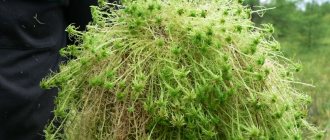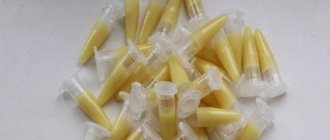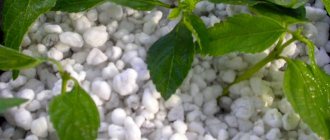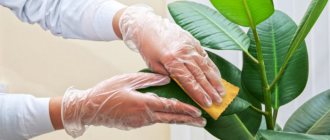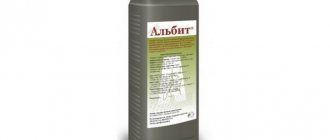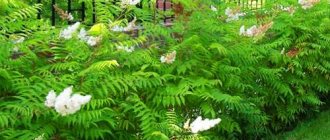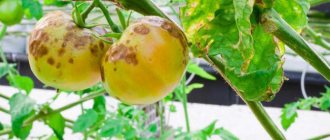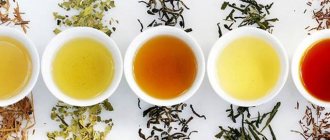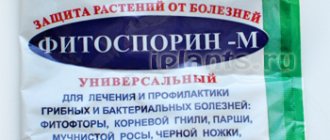Hydrogel for plants is designed to absorb moisture and retain it. Thanks to this quality, it is used for growing indoor plants and seedlings. Previously, the polymer was used only in agriculture. Now more and more designers and flower growers are using it when breeding plants.
You can grow seedlings in such a substance or mix it with the rest of the soil. Water that is absorbed by the polymer will not leak out, will not stain anything, and will not evaporate quickly. In addition, it is not always possible to provide timely, sufficient watering, but the hydrogel will saturate the plant with moisture and prevent the flower from flooding.
Types and functions of hydrogel for plants
The main function of the polymer is the accumulation of liquid with the subsequent transfer of moisture to plants. We pour hydrogel into the container with the flower; the owner will be able to protect it from drying out and rotting of the roots when overwatering. It helps plants adapt during transplantation or planting in an open bed. This product can replace timely, frequent watering. The owner of a greenhouse can, without fear, go on vacation using hydrogel for plants and not worry that the plants will dry out before his arrival.
The polymer comes in the form of granules that are sold packaged in sealed bags. The fine fraction is used to germinate planting material, and larger granules are mixed with the soil. The properties of the substance do not depend on the shade and size of the granules.
Varieties
- Balls that become softer when exposed to moisture. They do not injure the root system. When using them, you can reduce watering. They are recommended to be used for rooting indoor plants and when germinating seeds.
- Coarser balls are used by flower growers to decorate containers with plants. They can have different shades and shapes. The second name of this variety is aqua soil. It is used to create compositions, for example, by pouring beautiful bright balls into a vase of flowers.
- Hydrogel, which completely dissolves in water, is used more for processing planting material. Such liquid material is still little used in our country. Visually it looks like ordinary one, but if you fill it with water, it will not turn into swollen balls, but will completely dissolve. How to use? Plant seeds are soaked in the solution before planting so that the flowers sprout faster. You should not soak the seeds in it, because the liquid blocks the access of oxygen.
The polymer is safe and non-toxic. The material for their manufacture is sterile. It breaks down into water, carbon dioxide and ammonium. The dry fraction can absorb up to 300 ml. water per gram of granules. When watered, the “crumbs” increase in volume hundreds of times and turn into jelly. The polymer can be used instead of primer or mixed with it. The roots of the flower penetrate the gel and take from there as much moisture as the plant needs for optimal growth. The water contained in the balls will not stagnate or evaporate.
Features and Benefits
The gel is available in the form of granules or powder. Sold in packaged or dry form. This is a polymer that absorbs water well, while it expands several times.
On average, 1 gram of such a product can absorb almost a glass of water. As the soil dries, the gel releases water to the roots. It is believed that hydrogel for flowers should be in the form of balls, but this is not so. It was originally developed as a formless substance.
Hydrogel for indoor plants has both advantages and disadvantages. The advantages include the following aspects:
- high moisture absorption;
- the ability to maintain an optimal level of substrate moisture without frequent watering;
- efficiency;
- the composition provides all the necessary conditions for early seed growth;
- The gel retains all the useful microelements and vitamins and gradually releases them to the soil.
However, such a product has its drawbacks, which you should be aware of before using it to plant a houseplant. The disadvantages of this product are the following:
- crops whose seeds have a leathery shell cannot be grown in hydrogel;
- the composition is not compatible with all colors and crops;
- you need to monitor the temperature of the surface on which the flower with such a gel is located, as hypothermia is possible.
A decorative alternative to hydrogel is aqua soil, which is available in different shapes and colors. It is not added to the soil, since such balls do not decompose even over time. Advertising campaigns have endowed aqua soil with unusual abilities. Some advertisements indicated that the plant can be grown directly in aqua soil, but this is not the case. This kind of substitution caused a negative attitude towards aqua soil.
Pros and cons of polymer
Like any material that is used in agriculture and floriculture. When using granules, seedlings sprout 7–14 days faster than with conventional planting. The polymer also has a positive effect on seed germination and increases yield. When soaked in liquid hydrogel, the seeds are nourished better, and the soil retains its loose structure longer when adding regular fractions.
Popular: Zircon for plant growth based on natural components
When using a polymer, oxygen access to flower roots improves. If the balls are used in the beds, the survival rate of seedlings is up to 98%. The use of the polymer does not require large expenditures: up to 1.6 grams of dry matter are used per liter of soil.
With the help of hydrogel, seeds with a hard crust, such as legumes, are not germinated. If the balls are exposed to direct sunlight for a long time, mold may form on them. Gardeners do not recommend growing flowers in them for more than two years. After this period ends, it is necessary to change the fraction to regular soil.
Disadvantages of hydrogel
In addition to not being intended for growing flowers, hydrogel for plants without soil acquires additional flaws.
- The top layer of the balls dries out in the air.
- At the bottom of the container, the capsules become moldy from standing water. When mixed with soil, both of these disadvantages are absent: the circulation of water and air is sufficient to avoid such troubles. As a result, the same bamboo has to be periodically removed from the vessel and the balls washed in running water.
- Hydrogel for plants from some manufacturers without soil begins to creep away from a constant excess of water and turns into an unpleasant mess, losing the properties inherent in it.
In a word, it is better to take pity on your plantings and limit yourself to the prescribed use, since using hydrogel for plants in its pure form means wasting it and ruining your “garden”. It is enough to put cut flowers in colored balls - the bouquet will last longer in them than just in water, and you will have time to admire the bright composition.
How to use hydrogel
This material is used in horticulture and floriculture in several ways. According to one method, the seeds should be placed directly into the prepared polymer. Hydrogel for plants needs to be soaked in water, then placed in a blender and crushed. You can simply grind the balls in a sieve. As a result, the gardener should get a homogeneous mixture. The crushed polymer is laid out at the bottom of the container in a layer of about 30 millimeters.
Plant seeds are placed on it and lightly pressed into the mass. The seeds should not be deeply buried, otherwise oxygen access to them will be limited. This has a bad effect on plant germination. The pot is covered with film to create the desired microclimate inside the container. The film is regularly removed for daily ventilation. Condensation is removed from it.
If the hydrogel is added to the soil, the granules are poured out of the bag and mixed with the soil. The proportion should be 1:3 or 1:4. After this, the mixture is poured into a pot or box. No additional water is added. This mixture can be used for both vegetable crops and indoor plants in pots.
You can use granules when planting plants in an open bed. To do this, buy a liquid hydrogel for plants that dissolves in water. You need to dip the roots into the resulting mixture and plant the seedlings in the prepared holes. Thus, the plants will quickly adapt to the new planting location, and the roots will remain moist for a long time.
How to use gel in vases and pots
For indoor plants, there are a number of rules by which the gardener must act. Thanks to their observance, the flowers will grow better.
The gardener is recommended to use one gram of dry matter per liter of soil or 0.5 kilograms of water-saturated balls. To obtain a saturated hydrogel, you need to fill the fraction with water for 60 minutes and wait until the gel swells. After this, the remaining water is drained. The balls are mixed with soil to distribute the hydrogel evenly. Two weeks after mixing with soil, watering can be reduced. Their frequency is affected by the temperature and the place where the flower pots are located.
Popular: Main element: phosphorus in fertilizers for plant life
Differences between hydrogel and aqua soil
Hydroponics has long been an independent branch of crop production. And every year this area is developing more intensively. What are the benefits of hydroponics? And the fact that thanks to special solutions you can grow any plants and flowers without using soil. Hydrogel in hydroponics replaces drip watering of plants. Before using it, the balls are mixed with water, which the hydrogel absorbs. When planted in the ground, the hydrogel provides the plants with additional moisture.
Aqua soil
Aqua soil is very similar to hydrogel and is a variety of it. It differs only in appearance and is used only in decorative floriculture. Mainly for growing indoor flowers in beautiful vases or glass (transparent, plastic) pots. A comparison of Aquagrunt and hydrogel is given in the table:
| Hydrogel | Aqua soil | |
| Purpose | growing plants | Interior Design |
| Color | colorless | colorful |
| Form | various | balls, cubes |
| Application | soil application | adding to clear vases to create beauty |
| Nutrients | the flower receives all its nutrients from the soil | the plant does not receive nutrients, it needs to be fertilized from time to time |
| Effect | accelerates growth and development, protects from heat, stimulates flowering | decorative element, application to the soil - ineffective and not suitable for full-fledged growing and propagation of plants |
| Where used, region | in agriculture (USA, Europe), in forestry (Africa, Australia), in ornamental horticulture and floriculture - more than 25 years all over the world | designers, decorators |
The composition of the aqua soil is made denser than the hydrogel, which is intended for application to the soil. Its dense structure allows it to be produced in the form of various geometric shapes, such as balls, pyramids, etc.
The hydrogel has a specific shape and is pre-painted in a specific color. Its swelling time in water is from 10-12 hours to a day. Western-made gel swells within 1-1.5 hours. Aqua soil absorbs much less water than hydrogel.
On a note!!!
In Western countries and the USA, only hydrogel is produced (for agricultural use), and aqua soil comes from the Asian region, in the vast majority of cases this is China...
Adding polymer to beds
For gardening, 2.5 to 10 kilograms of dry substrate should be added per acre. More hydrogel is sprinkled into light, loose soil. Less substance is added to a loamy or chernozem garden. The fraction is mixed with soil to distribute the product evenly, then it is covered with earth on top. The hydrogel should not be on the surface of the soil (beds), because sunlight is harmful to it. After the soil has been mixed, the entire area is additionally watered.
You can also pour balls into holes prepared in the garden bed. Before this, the hydrogel for plants is additionally soaked in water. Swollen balls are placed at the bottom of the recesses in an approximate proportion of one to five. After this, the soil in the hole is mixed. Then you need to plant the plant; it is sprinkled at the required height with prepared mixed soil so that the hydrogel is lower than five centimeters from the surface of the bed.
Composition and instructions for use of hydrogel
Ivy, cyperius, scindaptus, syngonium, tradescantia, chlorophytum, codiaeum, hypoestes, scheffelera, cordyline and dracaena plants grow well in the hydrogel. But you should not plant crops in this substance that require a small amount of water (epiphytes, succulents), storing moisture for the future in roots or tubers, with dense leathery leaves.
- Pour 500 ml of water into the contents of the package;
- After 12 hours, the composition will absorb the required amount of liquid and will be ready for use (you can add the necessary fertilizers to the water in advance), each particle will increase to 1.5 cm;
- Wash the soil from the roots of the transplanted plant;
- Place the polymer balls in a container for the plant; if you want to create a multi-colored composition, it is a good idea to use a transparent vase for the seedling;
- After drying, the used hydrogel takes on its original appearance; it can be saved until the next use or refilled with water and planted with a plant or cut flowers.
The substance is economical; 1 small sachet is enough to obtain 500 grams of soil, which is enough for a narrow vase or pot.
If the top part of the gel dries out, then you need to remove the dried granules and soak them in water for 1 hour. By adding hydrogel to the soil mixture, you create a strategic supply of nutrients and moisture for the roots. At the same time, you can reduce the number of waterings, and the feeding compositions will not burn the roots of the plants.
The use of hydrogel in a summer cottage
The hydrogel is added soaked and dry to any crop. Polymer granules will help solve the problem of high groundwater levels in your area; it will remove water from the roots. The component, pre-soaked in a fertilizer solution, will immediately deliver nutrients to the roots of the plants.
Under mature trees, hydrogel is added taking into account the vigor of fruiting and age (within 20-40 g). According to the size of the crown around the trunk, the soil is pierced 50 cm with a sharp object, and the hydrogel is poured into these punctures. It is also added under bushes at a dose of 3-10 grams to a depth of no more than 30 cm.
The hydrogel cannot be shallowly embedded in the soil; if it ends up on the surface of the soil, it will disappear right before your eyes under the rays of the sun!
Planting seeds in hydrogel
To speed up germination, you can use a polymer when sowing seeds. To speed up the growth of seedlings, add water to the polymer and grind it. The resulting mass is distributed along the bottom of the container in a layer two to three centimeters thick. Large seeds are lightly squeezed into the hydrogel with your fingers, and small ones should be scattered over the surface. Oxygen access must be provided to the seeds.
Additionally, a film is stretched over the pot or seedling box or it is covered with glass. From time to time, the seedlings are ventilated and condensation collects. After the sprouts appear, they are transplanted into the soil along with the jelly-like mass, without removing the roots from it. Seeds with a hard shell should not be germinated this way.
Use in seedling boxes
Young plants are sensitive to watering, so using gel for growing seedlings is very convenient. The bottom of the wooden box is lined with plastic film, and a small fold is made onto the side walls of the container. The swollen balls are poured onto the bottom in a layer of up to 15 millimeters. Fertile soil should be poured on top of the hydrogel. Seeds are planted in the resulting mixture or grown plants are planted. Such seedlings are watered rarely, but abundantly. The hydrogel will take excess water and absorb moisture, gradually releasing it to the seedlings.
What is hydrogel for plants and how does it work?
According to the chemical formula, hydrogel refers to polymers (cross-linked copolymers) capable of holding large amounts of water and fertilizer solutions. The absorbency of the hydrogel is such that 1 g of dry matter can absorb 0.2-0.3 liters of water.
Dry hydrogel and saturated with water - an increase of 200-300 times!
For the hydrogel to start working, it must be added to the soil in the access area of the plant’s root system. Most often - in an already swollen state, saturated with water, less often - in a dry state (then it requires abundant watering immediately after application).
After 2-3 weeks, the plant’s roots will grow through the hydrogel capsules and will be able to absorb moisture from there without waiting for the next watering. The soil may dry out completely between waterings, but this will no longer be a shock to the root system. The hydrogel will be a backup source of water, which will prevent the plant from withering and drying out during dry periods.
The roots of the plant grow into the hydrogel and begin to be fed with water from there.
Hydrogel granules can be saturated not only with water, but also with fertilizer solutions. Then, in your absence, the flowers will not only not wither, but will also continue to feed “properly.”
Due to its ability to adsorb moisture, the hydrogel has another property: it will not allow the flowers to flood. All excess moisture that would normally drain through the drainage holes is absorbed into the hydrogel and then absorbed by the plant as needed.
I would like to immediately note that this article is not about Chinese hydrogel or, as it is also called, “aquasoil”. These are slightly different materials, although they have a similar polymeric nature. The purpose of agricultural hydrogel is to serve as a source of additional water for plants. The main purpose of aqua soil is a decorative effect.
Application nuances
The hydrogel can be used for gardening and growing indoor plants in dry and wet form. Only swollen crystals are poured into flowerpots, because the balls can lift the soil. Both the dry fraction and moistened crystals can be added to open ground. When adding to the garden bed, the soil is additionally watered with water or a mixture of fertilizers. The hydrogel will gradually release all the moisture and nutrients to the plants.
In addition, the polymer is applied under already grown bushes and trees. If the hydrogel was not applied in a timely manner, then depressions with a depth of 30 to 40 centimeters are made near the bushes and 20 to 40 grams of dry granules are poured into the holes. The amount of substance is calculated depending on the age of the plant. Fertilizers and soil are poured into the holes on top.
Popular: Improving and restoring compost with Em-preparation
In the same way, you can add crystals to beds with perennials and shrubs. In this case, the amount of hydrogel is from three to ten grams. The holes are made no deeper than 30 centimeters. After applying the product, the gardener must water the soil in two doses with an interval of 60 minutes. You don’t have to make additional holes, but simply carefully bury the hydrogel near the plant, mixing it with the soil.
You can use dry crystals for indoor plants in the same way. To do this, punctures are made in the soil in the pots. After the flower has been watered, some of the gel may be squeezed out of the soil; the balls are additionally sprinkled with soil.
Crystals for storing and transporting plants
Crystals can be used to protect the root system during transportation or if the plant needs to be stored for a long time. For storage purposes, you should buy a special hydrogel in powder form. When the crystals are mixed with water, they become like jelly. Plant roots are dipped into this solution. The resulting film prevents the root system from drying out. The effect lasts two to three days.
What is the difference between aqua soil and hydrogel?
Some manufacturers, seeing the popularity of hydrogel, began to produce another product, trying to sell it as a gel. Aqua soil is not mixed with soil, because it can injure the roots of flowers and plants. Manufacturers advertise that it is used for growing seedlings and seeds. People, without understanding it, pour it into the ground and harm their plants. For this reason, buyers leave a lot of negative reviews about hydrogel because they expect a completely different result.
Another subtlety is the types of plants for which the substances are used. While polymers are ideal for some colors, others, on the contrary, react negatively to such innovations. Therefore, gardeners recommend using both varieties with soil.
How to care for plants in aqua soil?
When growing flowers in aqua soil, you should adhere to the following rules:
- Aqua soil can serve plants as long as it contains moisture.
- When the balls dry out, add liquid to the container.
- When the top layer of hydrogel dries, the balls should be sprayed. In this case, the lower part does not need to be filled with water.
- If any layer of balls is very dry, then it needs to be temporarily removed from the pot and soaked in water for 12 days.
- General watering of indoor flowers in aqua soil is carried out once a month.
- The remaining water that is not absorbed into the hydrogel is poured out.
- To reduce moisture loss, cover the top of the container tightly with plastic wrap.
- The root of the flower must be thoroughly washed away from the earthen soil.
- The root system must be completely immersed in the hydrogel.
- If you have no experience in growing plants in aqua soil, then you should start by rooting the cuttings.
- Flowers with complex root systems should not be grown in this substrate. As a rule, it is easily injured and the plant may die.
- Aquagel with the flower in it is not completely filled with water, as aeration of the roots may occur and the flower will die.
- Plants with tall stems when grown in hydrogel must be tied up to avoid excessive stress on the flower.
- Only moisture-loving flowers and shade-tolerant plants are planted in balls. This is due to the fact that aqua soil cannot be left in direct sunlight.
- When keeping indoor plants in aqua soil, the balls should be watered with mineral fertilizers once a month. Thus, the plant will receive the substances necessary for growth and development. Any remaining liquid must be removed.
- The service life of aqua soil is six months. After this time, the plant should be transplanted into a new substrate or soil mixture.
Interesting!!!
Aqua soil is used not only in floriculture. Scientists from Duke University have invented a combined hydrogel that mimics human cartilage tissue. This discovery will soon help people in the treatment and rehabilitation of joints.
Despite all the positive qualities of aquagel, it will never fully replace soil soil. And the flower in it will not grow and develop as much as in soil rich in nutrients.
Alternative uses
Some gardeners practice non-standard alternative uses of polymer. Such measures make it possible to make plants more decorative and improve crop yields. If you want to add the product to the soil of a rock garden or flower bed, then you should not pierce the ground or dig holes. So, you can damage the fragile roots of flowers. You can add hydrogel by simply grinding it in a coffee grinder. The resulting powder will be similar to flour. It is mixed with water and the garden bed is watered at the rate of one and a half grams of product per 1 m2.
In spring or autumn, when digging the beds, you can also apply the product at the rate of 150 grams of the substance (powder, granules) per hundred square meters of garden. The hydrogel is not afraid of cold winter, and in the spring the product will absorb melt water. It will become easier for the gardener to care for the plantings; the plants will need to be watered less often in spring and summer.
Currently reading:
- Planting to decorate the site with three types of coniferous trees
- Using perlite in the garden and for indoor plants
- Timely application of dolomite flour for the harvest
- How to grow Chinese cabbage in open ground
Share the news on social networks
About the author: Lyudmila Vasilievna Nosikova
Agronomist of the state agricultural enterprise "Garovskoe" of the Khabarovsk region of the Khabarovsk Territory.
Effects of use and advantages of hydrogel
Using hydrogel you can solve many problems with indoor and garden plants. Here are the most basic positive effects of its use:
Flowers in hydrogel do not suffer from drought. The intervals between waterings increase by 2-6 times. Garden plants growing in containers on a balcony or street can be left without watering for an average of a week. And indoor ones - for 2-3 weeks (depending on the time of year and room temperature).
The hydrogel is able to retain nutrients (fertilizers), preventing them from being washed out of the soil.
The hydrogel absorbs excess water, freeing up the aeration pores. The roots of the plant breathe freely, and the water does not stagnate.
The hydrogel improves the living conditions of the plant, accelerating growth rates, promoting flowering and fruiting.
The hydrogel helps increase the plant's resistance to stress and infectious diseases.
